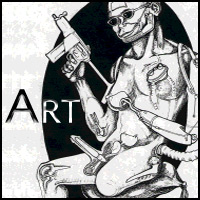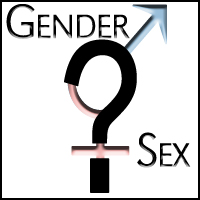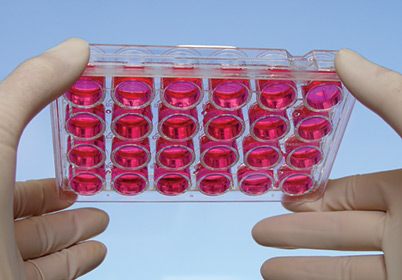
Assisted Reproduction and In Vitro FertilizationNicolette Cady Wikipedia defines 'assisted reproduction' as “a general term referring to methods used to achieve pregnancy by artificial or partially artificial means. It is reproductive technology used primarily infertility treatments. Some forms of AR are also used in fertile couples for genetic reasons. AR is also used in couples who are discordant for certain communicable diseases, i.e. AIDS, to reduce the risk of infection when a pregnancy is desired. The term includes any reproductive technique involving a third party e.g. a sperm donor. There is yet no strict definition of the term. Usage of the ART mainly belongs in the field of reproductive endocrinology and infertility.” While assisted reproduction has been a saving grace to many couples, it is a process which is both applauded and degraded by different groups. Through exploring both arguments, it becomes easier to formulate an individual opinion about infertility treatments. It also defines In Vitro Fertilization as “is a process by which egg cells are fertilized by sperm outside the body, in vitro.. IVF is a major treatment in infertility when other methods of assisted reproductive technology have failed. The process involves hormonally controlling the ovulatory process, removing ova (eggs) from the woman's ovaries and letting sperm fertilize them in a fluid medium. The fertilized egg (zygote) is then transferred to the patient's uterus with the intent to establish a successful pregnancy. The term in vitro, from the Latin root meaning 'in glass', is used, because early biological experiments involving cultivation of tissues outside the living organism from which they came, were carried out in glass containers such as beakers, test tubes, or Petri dishes. Today, the term 'in vitro' is used to refer to any biological procedure that is performed outside the organism it would normally be occurring in, to distinguish it from an 'in vivo' procedure, where the tissue remains inside the living organism within which it is normally found. A colloquial term for babies conceived as the result of IVF, “test tube babies”, refers to the tube-shaped containers of glass or plastic resin, called test tubes, that are commonly used in chemistry labs and biology labs. However, in vitro fertilization is usually performed in the shallower containers called Petri dishes.”
Both terms, however, are acceptable when talking about cyborgs at an embryonic state. Assisted reproduction and In Vitro Fertilization have opened new doors in a new biological era. The transformation from human to cyborg has been explored with prosthetics, implants, steroids, and various surgeries. Because of these, we have been able to technologically modify those aspects of humans which were biologically created. These in vitro babies can be considered cyborgs because they were created by technological advances and would not be in existence otherwise. The process for in vitro fertilization goes as follows: 1 Follicle growth (stimulated by injections). 2 Timing of ovulation (based on blood tests and ultrasound scan). 3 Egg collection from the follicles (egg pick-up), using the ultrasound machine. 4 Fertilization of eggs with partner's sperm. 5 Embryo transfer to the uterus (ET). 6 Pregnancy test (a blood test) This process was first performed successfully in England in 1978 by Dr. Robert Edwards and Dr. Patrick Steptoe (Georgia Reproductive Services). Many people believe in in vitro fertilization and assisted reproduction for various reasons including that these processes ease the pain of infertility by providing another option. It also makes sense to allow for women to explore this option just as they have the option to use birth control or terminate pregnancies. It is a woman's right to choose what she wants to do with her body and if she or her partner is infertile, she has the right to make the choice to explore assisted reproduction. "Clinics are taking a more rounded approach to infertility, widening the focus from egg and sperm to the emotional health of the couple. They place more emphasis on counseling, and have begun to acknowledge the possibility of failure,” says Dr. John Mc Bain, chairman of the Melbourne IVF group. (Time, 1997, pg. 67) This process may help the couple in the long run and be beneficial to the the new family. While there are many arguments that promote the development of in vitro fertilization, there are many arguments for the eradication of this process. I recently interviewed a deacon of a Catholic church, my grandfather, Joseph Scott Cady, who stated his beliefs that, “In vitro fertilization is not a natural process, and the process of procreating should not be tampered with. Conceiving a child is meant to be done only one way. Having a child is a blessing from God, and the process of in vitro fertilization is not the way God intended. Pope Paul VI has taught that there is an “inseparable connection, willed by God, and unable to be broken by man on his own initiative, between the two meanings of the conjugal act: the unitive meaning and the procreative meaning.” Also, there is an ethical problem with stem cell research .The Catholic Church teaches that medical research must refrain from operations on live embryos, unless there is moral certainty of not causing harm to the life or integrity of the unborn child and mother, and on condition that the parents have given free and informed consent to the procedure. And since stem cell research inevitably causes the death of the embryos, this is not moral. From a Catholic standpoint, this procedure is not moral, and the hospital representing these beliefs should not give treatment that is in violation of Catholic beliefs. In vitro fertilization violates the rights of the child and deprives him of his filial relationship with his parental origins and can hinder the maturing of his personality. The Catholic Church condemns both in vitro fertilization and stem cell research, and I would strongly argue for this not to take place.”
It is clear that the Catholic Church and it's leaders choose to not be involved in anything considered even the least bit 'cyborgean' as they approach issues of morality and state that IVF is not considered natural. It is supported by different women's rights groups and infertile couples who want to take advantage of this cyborg technology.
|












